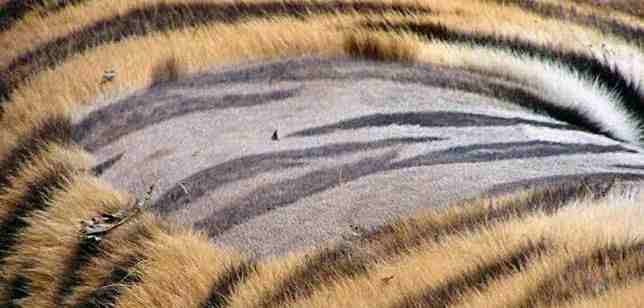Topics in Basic Science
What is science? Qualities of a scientist Resources from living things Resources from animals Importance of immunization Types of Carbohydrates: Monosaccharides and Polysaccharides Carbohydrates: Disaccharides and Oligosaccharides Len Academy Examination Questions for Basic Science, JSS2, 2nd Term Len Academy Examination Questions for Basic Science, JSS3, 3rd Term Len Academy Examination Questions for Basic Science, JSS3, 2nd Term Primates: Characteristics of Primates Effects of improper waste management Waste Management: Causes of waste in the society Concept of mass and weight Mineral Salts: Sources, functions and deficiencies of macronutrients Sources, functions and deficiencies of micronutrients Len Academy questions for Basic Science JSS1 Len Academy mid-term test questions for Basic Science JSS1, 2nd Term Microorganisms causing food, water and air borne diseases Vector borne organisms and the diseases they cause Bones of the Human SkeletonAcademic Questions in Basic Science
Which of the following diseases is associated with river blindness?
A. Anthrax
B. Lawnmower Disease
C. Onchocerciasis
D. Devil's Crunch
E. Trypanosomiasis
F. Tularemia
The vector for yellow fever is _____.
A. Aedes Mosquito
B. Female Anopheles Mosquito
C. Plasmodium
D. Flavivirus
E. Black Fly
F. Bacillus Anthracis
The bones of the head and face make up the skull. These bones are _____ in number.
A. 12
B. 14
C. 16
D. 18
E. 20
F. 22
Bacteria are not a constituent of our environment.
A. True
B. False
Below are types of drugs. Which of these is considered as pain killers?
A. Stimulants
B. Depressants
C. Opiods and Morphine Derivatives
D. Hallucinogens
E. Anabolic Steroids
F. Cannabinoids
Which of the following statement is false concerning drugs?
A. Drugs can be inhaled
B. Drugs can be injected directly into the bloodstream
C. Drugs can be eaten
D. Drugs exist exclusively in the forms of tablets and syrups
E. Drugs can be placed under the tongue
F. Drugs can be taken with water or another liquid
Vaccination involves a process of introducing pathogens or germs into a person in order to prevent such person from the diseases they cause.
A. True
B. False
With regards to the human health, foreign bodies are best regarded as _____.
A. International bodies
B. Antilators
C. Antibodies
D. Antigens
E. Antibiotics
F. Antidotes
Living things are generally referred to anything that have life. Oftentimes, they are termed as living organisms. In science, living organisms are classified into kingdoms. These include the animal kingdom, plant kingdom, fungi kingdom, protist kingdom and so on. However, we shall consider the resources from living things (plants and animals) in this article.
Please read on the characteristics of living things here.
Recall that resources can be natural or artificial. Natural resources are valuable materials present in nature, and are exploited and utilized for the well being of humans. On the other hand, artificial resources are man-made; and are manufactured from natural resources. Therefore, they are not directly present in nature.
You read on the importance of forest here.
Meanwhile, understand that resources can also be renewable or nonrenewable. Renewable resources implies that they can replenish or replace themselves over time by natural processes. Examples are biomass (plant materials), solar, wind and water energies.
You can read on ecological pyramid here.
Non-renewable resources are limited in nature and may eventually run out overtime. Examples are oil, natural gas and coal.
As the name implies, plant resources are useful materials to humans derived from plants. Man may use these plant resources for subsistence (themselves) or for commercial purposes. As an instance, a family may grow vegetables, spices and ornamental plants for their own use, that is, for subsistence. On the contrary, a farmer may grow these crops for commercial purposes.
Please read on the differences between plants and crops here.
Simply put, plants are generally grown for their resources which may be for subsistence or commercial purposes. These plant resources include:
1. Oxygen: Oxygen is a fundamental part of life. It is considered as an important resource from plants since it is produced as a by-product of photosynthesis. For this reason, it is recommended that each person should plant a tree.
Please read on autotrophic nutrition and photosynthesis here.
Apart from giving oxygen to the earth, they also take away carbon(IV)oxide from it, and that's indeed a good thing for mankind.
2. Ornamental Crops: These crops are grown for beautification purposes. We see them in homes, schools, road sides and tourist sites. Examples are silver nerve plant, snake plant, peace lily and chinese money plant.
The image below shows a home beautified with ornamental crops.

You can read on orderliness here.
3. Food Crops: As the name implies, food crops serve as food for humans and animals. They are planted for this very reason (food). Food crops are generally put into different types. These are:
Root and Tubers: Examples are cassava, yam and cocoyam. They serve as excellent sources of carbohydrates.
Cereals: They include grains like maize, millet, wheat, rice, oats, barley and sorghum. They are sources of carbohydrates.
Please read on carbohydrates here.
Fruits: Apples, oranges and mangoes are fruits. They are good sources of vitamins, minerals and fibres.
Vegetables: Examples are pumpkin, waterleaf and lettuce. They are great sources of minerals and fibres.
Please read on mineral salts, their sources, functions and deficiencies here.
Spices: These crops add flavor to food. Ginger and garlic are examples of spices. They have medicinal values and can thus be useful in treating ailments.
Food crops provide important nutrients like carbohydrates, proteins, fats and oils, vitamins, mineral salts and water. These are all essential for human survival.
4. Cash Crops: These are crops planted for commercial purposes. In addition to making money through their sale, they may also generate foreign exchange. They are typically planted in large quantities and will include the following:
Tree Crops: They are planted for their wood which are important for building and construction purposes. These can be either hardwood or softwood. Examples are iroko, obeche and mahogany.
Please read on hardwood and softwood here.
Tree crops constitute an important part of the forest ecosystem. This include the tropical rain forest which serves as home to over 50% of animal species.
Please read on tropical rainforest and its importance here.
Tree crops also include the the various tree producing fruits around us. Examples are mango and orange trees respectively.
Oil crops: They are planted for their oil. Examples are oil palm, groundnut and coconut.
Fibre Crops: They are grown for usage in the textile industry. Cotton crop is an example. Others are grown for the production of rope (which is also a part of the textile industry). Examples are sorrel plant, flax, guinea-hemp, sisal and jute.
Beverage Crops: They are grown for making beverages. Examples are coca, coffee and tea crops respectively. They can serve as stimulants.
Please read on stimulant drugs here.
Latex Crops: These are sticky substances derived from plants. They include gum, rubber and tannins. They may be used to produce gloves, balloons, rubber bands, catheters and mattresses.
Other examples of cash crop include sugarcane, tobacco, rice, beans, maize, wheat and so on.
5. Medicinal Crops: These are crops grown for their medicinal values. They include moringa, cinchona, neem tree, echinacea, garlic, yeast, gingko, ginseng, goldenseal and lemon grass. The bark, root and trees of certain plants have also got great medicinal value. They can therefore be used to treat a variety of diseases.
You can attempt Len Academy examination questions for JSS1 here.
6. Manure: Compost manure is comprised of decayed organic matter derived from decomposed plant material. It provides a variety of essential nutrients to plants, enhances soil structure and provides an excellent environment for the soil's beneficial microbes.
Please read on resources from animals and its explanations here.
Kindly share this article via the links below:

Please click here to contact Alfred if you require any of the following services:
If you need a standard website at an affordable price.
Online training on the academic subjects: biology, chemistry and basic science.
If you require an advanced smart school management system (web application) for your school.
Click here to read on Len Academy Smart School Software.
Please click here to follow Len Academy on Google News.
Please Register here or Login here to contribute to this topic by commenting in the box below.
Amazing facts in Basic Science
According to scientific research, if the first tear drop comes from the right eye, it’s tears of joy. If it comes from the left eye, then it is as a result of pain
Dentistry is the oldest profession in the world. This is considered true because a research conducted by the University of Bologna, Italy on a 14,000-year-old skull found that one rotten tooth in the jaw had been deliberately scoured and scraped with a dental tool
Scientific research has it that the human nose can distinguish more than a trillion different odors

Tigers have striped fur. So also is their skin

The most common wild bird in the world is native to Africa, and it's the red-billed quelea with a population estimated to be around 1.5 billion
Of all animals, mosquitoes hold the record of killing most humans annually. They are responsible for the deaths of 725,000 - 1,000,000 persons yearly
Antibiotics fights and kills bacteria. However, they do nothing to a virus
All insects have six legs. However, dragonfly has six legs but can't walk
The chin is defined as the protruding part of the face below the mouth, formed by the apex of the lower lip. It is shown below:

Interestingly, humans are the only animals with chin

Ripe cranberries will bounce like a ball. For this reason, they are nicknamed 'bounceberries'. They will also float in water
Notable points in Basic Science
We have six classes of food. These are:
Carbohydrates
Proteins
Fats and Oils
Vitamins
Mineral Salts
Water
In humans, roughages are not classified as one of the classes of food. This is so because they aren't digested. Instead, roughages facilitate the movement of bowels in the large intestine (colon); and for this reason, they can become useful in treating constipation.
Food refers to anything that is ingested by living organisms, giving them nutrients and thus enabling them to stay alive.
As an instance, 99% of a panda's diet is bamboo. In this case, bamboo is considered as food to a panda since it provides a source of nutrient and keeps it alive. This is shown in the image below:

The only process in nature that actively enriches our atmosphere with oxygen is photosynthesis. Every other process like respiration, burning and combustion takes away oxygen from it. In addition, they introduce carbon(IV)oxide (CO2) into the atmosphere.
Photosynthesis is also the only process that takes away carbon(IV)oxide (CO2) from the atmosphere.
Photosynthesis is defined as a process by which green plants manufacture food by utilizing carbon(IV)oxide and water in the presence of sunlight.
Oxygen is given off as a by-product of photosynthesis. In regards to this, it is recommended that each person plants a tree.
Matter is composed of particles which can be:
Tightly packed together (as seen in solids).
Loosely packed together (as seen in liquids).
Completely separated (as seen in gases).
The movement of the particles of matter is a function of the overall kinetic energy present in them. You can think of kinetic energy as energy in motion.
An increase in the particles' vibrational, rotational or translational motion will imply an increase in temperature while a decrease in the particles motion (vibrational, rotational and translational) will mean a decrease in temperature. Based on this knowledge, we can therefore define temperature as the measure of the average kinetic energy possessed by the particles of matter.
Intelligence Quotient (IQ) is a score derived from a set of standardized tests developed to measure a person's cognitive abilities in relation to their age group.
IQ may also be defined as the ratio of mental age (MA) to chronological age (CA) multiplied by 100.
Below are some formulas pertaining Intelligence Quotient:
IQ = MA x 100 ÷ CA
MA = Mental age
CA = Chronological age
IQ above 100 = Brilliance
IQ that equals 100 = Average
IQ below 100 = Below Average